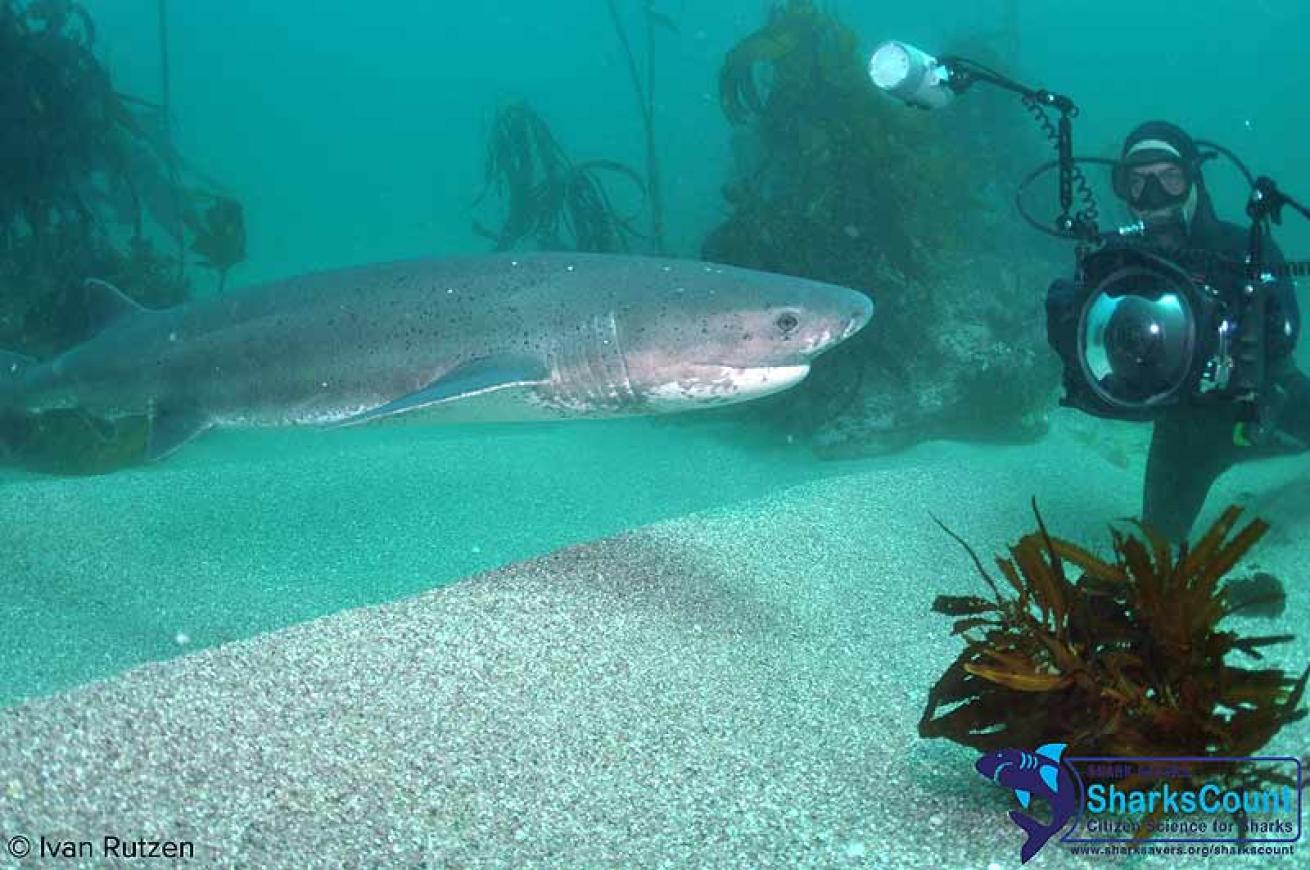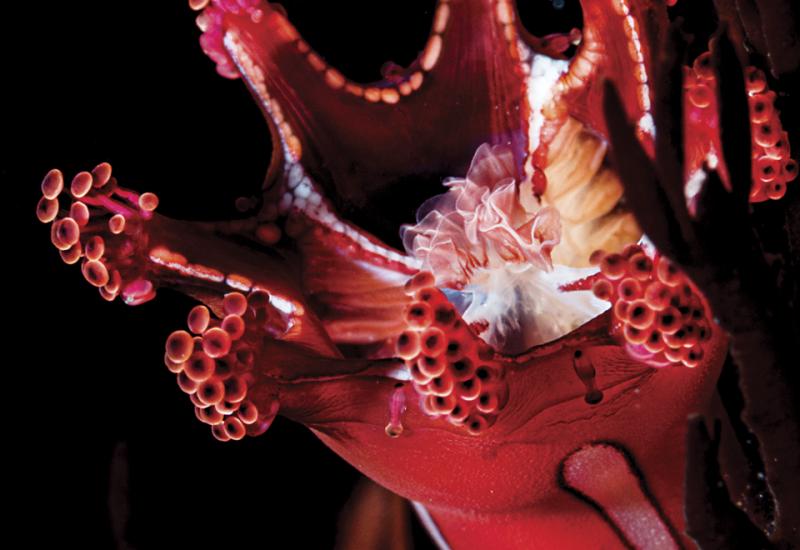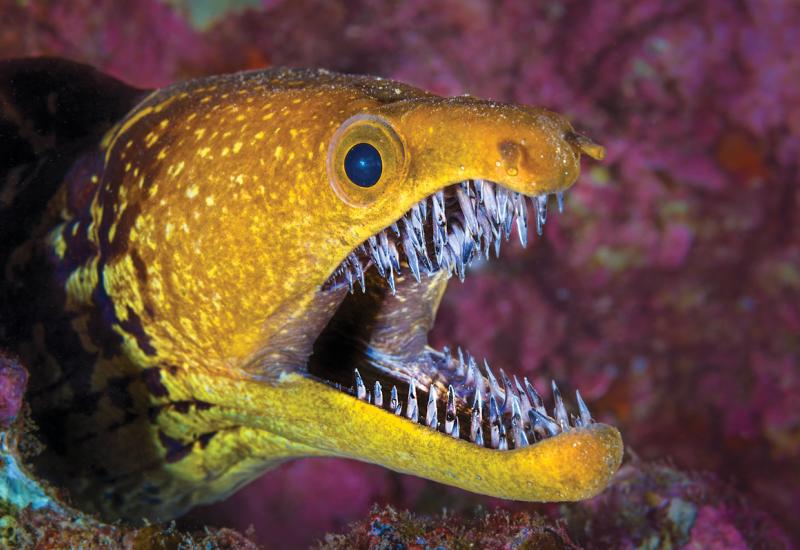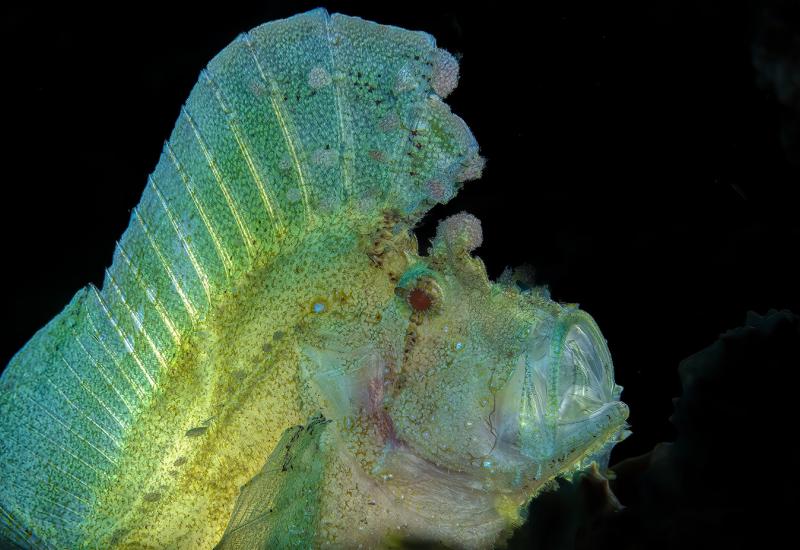Divers Guide to Marine Life: Broadnose Sevengill Shark (Notorynchus Cepedianus)

Broadnose sevengill shark (Notorynchus cepedianus)
They are known to lift their heads out of the water to look around, a behavior called ‘spy hopping.’
Click HERE for more fun shark facts!
Ivan Rutzen
Broadnose sevengill shark (Notorynchus cepedianus)
•Conservation status: IUCN Red Listed as ‘Data Deficient’
•These unique sharks get their name from having seven paired gill slits compared to more ‘modern’ sharks having five pairs; they have only one dorsal fin.
•They have counter-shaded coloration meaning a darker top coloration as compared to the underside, many with black, light grey or white dots. They have broad, rounded snouts and can reach sizes of 2 to 3 meters (~ 6.5 to 10 ft.) in length
•Sevengill sharks are common in temperate waters and are often found in shallow waters.
•They feed on other sharks, fish, marine mammals, and sometimes scavenge dead fish. They may hunt in packs but it is a still unknown whether these packs show ‘cooperative behavior,’ like wolves.
•Sevengill sharks belong to the order of ‘frilled sharks,’ which are thought to be some of the oldest surviving species of sharks.
•They are known to lift their heads out of the water to look around, a behavior called ‘spy hopping.’
•These sharks can be aggressive in the presence of food or bait.
Information provided by the SharksCount program. Find out more about citizen science for sharks at www.sharksavers.org/sharkscount.
Click HERE to see the full list of sharks.

Ivan RutzenThey are known to lift their heads out of the water to look around, a behavior called ‘spy hopping.’
Click HERE for more fun shark facts!
Broadnose sevengill shark (Notorynchus cepedianus)
•Conservation status: IUCN Red Listed as ‘Data Deficient’
•These unique sharks get their name from having seven paired gill slits compared to more ‘modern’ sharks having five pairs; they have only one dorsal fin.
•They have counter-shaded coloration meaning a darker top coloration as compared to the underside, many with black, light grey or white dots. They have broad, rounded snouts and can reach sizes of 2 to 3 meters (~ 6.5 to 10 ft.) in length
•Sevengill sharks are common in temperate waters and are often found in shallow waters.
•They feed on other sharks, fish, marine mammals, and sometimes scavenge dead fish. They may hunt in packs but it is a still unknown whether these packs show ‘cooperative behavior,’ like wolves.
•Sevengill sharks belong to the order of ‘frilled sharks,’ which are thought to be some of the oldest surviving species of sharks.
•They are known to lift their heads out of the water to look around, a behavior called ‘spy hopping.’
•These sharks can be aggressive in the presence of food or bait.
Information provided by the SharksCount program. Find out more about citizen science for sharks at www.sharksavers.org/sharkscount.
Click HERE to see the full list of sharks.










